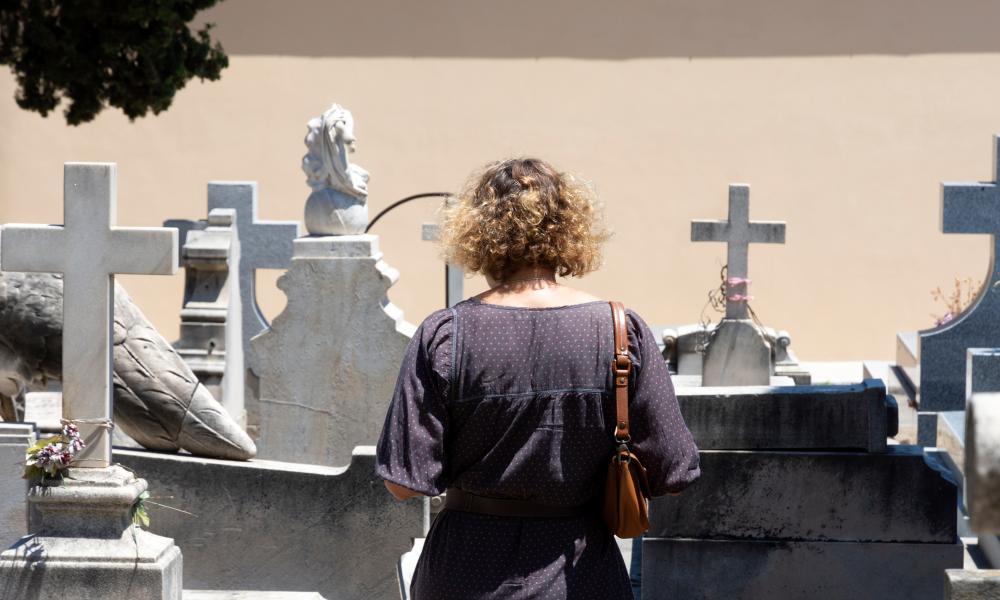
How Should I Handle the Remains of My Loved One?
Question: I know someone whose family member died, and to honor them, wants to scatter their ashes at a place the person loved. Are Catholics allowed to scatter ashes wherever they want? What is the correct way to honor a loved one and their legacy? Are Catholics allowed to scatter ashes, and is there a specific place we should do so?
Question: I know someone whose family member died, and to honor them, wants to scatter their ashes at a place the person loved. Are Catholics allowed to scatter ashes wherever they want? What is the correct way to honor a loved one and their legacy? Are Catholics allowed to scatter ashes, and is there a specific place we should do so?
Answer: When a person we love dies, it can turn our world upside down as many deep emotions come into play. Even when we expect death, a loved one’s passing is upsetting. Any relief we might feel that their suffering is over is offset by the finality of losing one who is part of our life’s fabric. Our grief can be more intense if the deceased is estranged from us.
The sadness and anxiety that come with loss are why our Church teaches us to plan for funeral rites, and a final disposition of our mortal remains consistent with our beliefs. In this context, Catholics should consider the burial or entombment of their bodies or cremains as an integral part of the sacred liturgical rites that the Church performs for the faithfully departed. In other words, for Catholics, interring our mortal remains in a sacred place is a final act of faithfulness and divine worship. In committing our body or cremains, we want to testify to the body’s sacredness as a temple of the Holy Spirit and as integral to our dignity as children of our Heavenly Father, formed in his image and likeness.
In choosing cremation, one should plan for the ashes' final resting place in a blessed grave, tomb, or mausoleum niche to demonstrate belief in the passage from death to life and the expectation of a bodily resurrection. At such a significant moment, focusing on passing things to which a person may have been attached in this life is a mistake. Instead, one should look forward to the promise of eternal life and plan for funeral rites that proclaim the importance of one's Catholic faith. The Church’s Funeral rites proclaim the blessed assurance that the Lord Jesus, by his three days in the tomb, made the graves of believers holy. As such, a grave or tomb is the appropriate final resting place for Catholics as they await the resurrection to eternal life.
Another consideration is that Catholicism views burying and praying for the dead as works of mercy. Visiting the graves of the faithfully departed on All Souls or on an anniversary or birthday are acts of devotion. For Catholics, the works of mercy and acts of devotion allow loved ones to commemorate their beloved family members and friends and honor their memory, not just at the time of their death but for all the years to come.
In this light, scattering a person’s cremains, keeping them at home, making them into jewelry, or other practices are inappropriate for Catholics. These practices do not respect our faith’s reverence for the body or its destiny to be with the Saints in Glory. Scattering ashes is also closely entangled with belief in reincarnation, where one sees scattering one’s ashes as liberating the soul so it can animate a new body. This way of thinking contradicts Catholic belief in the bodily resurrection and our hope-filled anticipation of the day God will reunite our body and soul in heavenly glory.
For these reasons, Catholics should plan to bury or inter their cremains immediately after death in a sacred place like a cemetery, columbarium, or mausoleum niche or commit them to the sea in a sealed urn. These are the dispositions that scripture and tradition teach us to demonstrate our Catholic faith as our earthly pilgrimage ends and we await the world that is to come.



